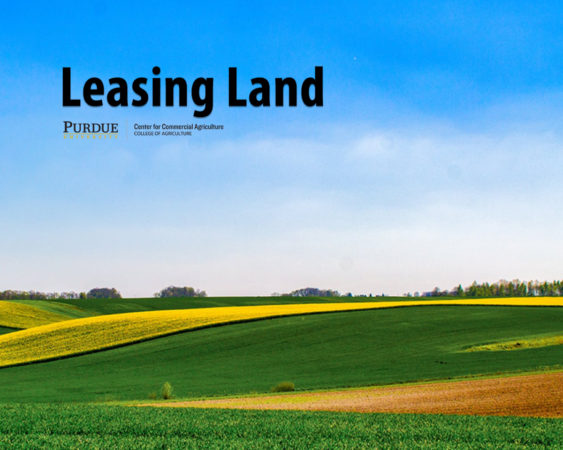August 15, 2019
Flexible Cash Rent Leases
Flexible cash leases are of interest to landowners that would like to capture the upside in years when we have relatively high crop prices, crop yields, or both. They may also be attractive to landowners that are reluctant to lower cash rents, particularly given the uncertainty with respect to crop prices in 2020 and beyond. Switching from a fixed cash rent lease to a flexible cash rent lease allows a lower base rent to be established while simultaneously allowing landowners to share in relatively high crop revenues if they occur.
Parameters that need to be considered when developing a flexible cash rent lease include a base cash rent, crop revenue triggers, and landowner shares above the revenue trigger. For the illustration below, we will set base cash rent at 90 percent of current cash rent. The crop revenue triggers are computed by adding the base cash rent to non-land costs. The landowner share above the crop revenue trigger can vary, but for illustrative purposes we will use 50 percent. A bonus is added to the base case rent if actual crop revenue is above the triggers.
Let’s use a simple example to illustrate how a flexible cash rent lease may work. Assume that the current cash rent is $240 per acre. Using this figure, base cash rent will be set at $216 (which is 90 percent of current cash rent). We will assume that the farm utilizes a corn/soybean rotation. Using cost budgets for corn and soybeans, crop revenue triggers are set at $805 for corn and $593 for soybeans.
Using the base case rent and revenue crop triggers above, let’s see how high crop yields or crop prices would need to be trigger a bonus. The first scenario uses above trend yields and expected prices while the second scenario uses trend yields and relatively high prices. For this example, trend yields are 187.5 for corn and 57.0 for soybeans. Expected corn and soybean prices are $3.85 and $9.05 per bushel, respectively.
Under the first scenario, corn and soybean yields would need to be higher than 210.0 and 65.6 bushels per acre, respectively, to trigger a bonus payment. Using trend yields, under the second scenario, corn and soybean prices would need to be higher than $4.31 and $10.41 per bushel, respectively, to trigger a bonus payment. Notice that if just one of the crops has a higher yield or price, a bonus would not necessarily be paid.
Let’s use another example to illustrate the computation of the bonus. Assume that corn and soybean yields are 215.0 and 67.5 bushels per acre, and that corn and soybean prices are $3.85 and $9.05 per bushel. Using these assumptions, corn and soybean revenue are $828 and $611 per acre, respectively. For both corn and soybeans, actual crop revenue exceeds the trigger. Using our trigger revenue amounts and a landowner share above the trigger of 50 percent, results in a cash rent of $227.50 for corn {$216 + ($23 x 50 percent)} and $225.00 for soybeans {$216 + ($18 x 50 percent)}. On average, in this example, the landowner would receive $226 per acre in cash rent. Note that the cash rent for the flexible cash lease ($226 per acre) is still lower than the market cash rent ($240 per acre).
This article briefly discussed flexible cash rent leases. More information on cash rents and land values can be found on the web site for the Center for Commercial Agriculture.
TEAM LINKS:
PART OF A SERIES:
RELATED RESOURCES
Margaret Lippsmeyer, Michael Langemeier, James Mintert, and Nathan Thompson segment U.S. farms by farm resilience, management practices, and producer sentiment. This paper was presented at the Southern Agricultural Economics Meeting in Atlanta, Georgia in February.
READ MOREUPCOMING EVENTS
We are taking a short break, but please plan to join us at one of our future programs that is a little farther in the future.




